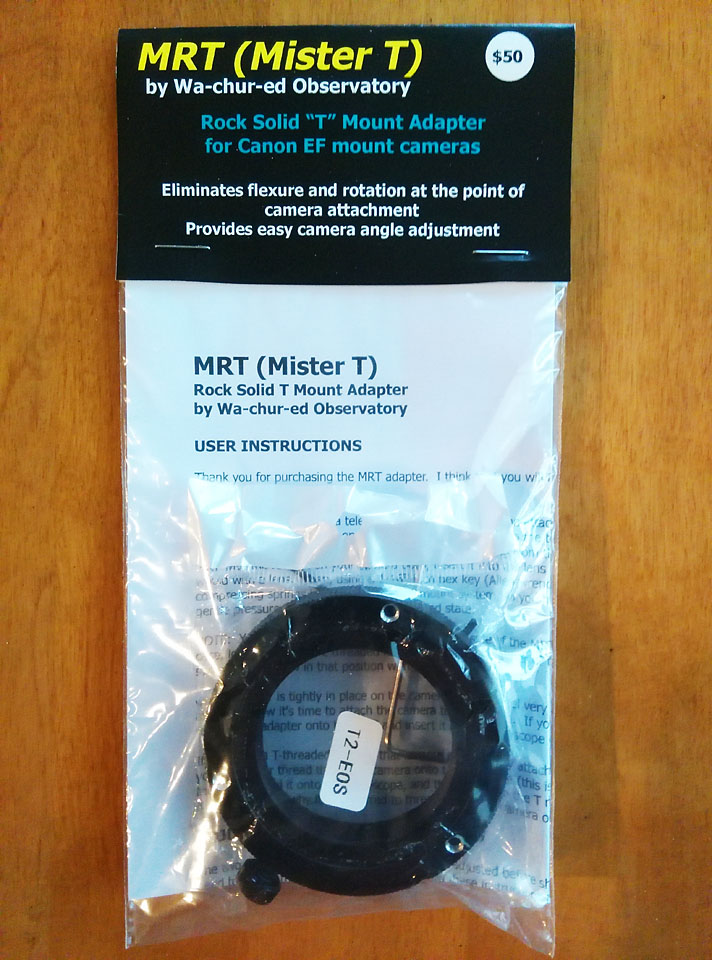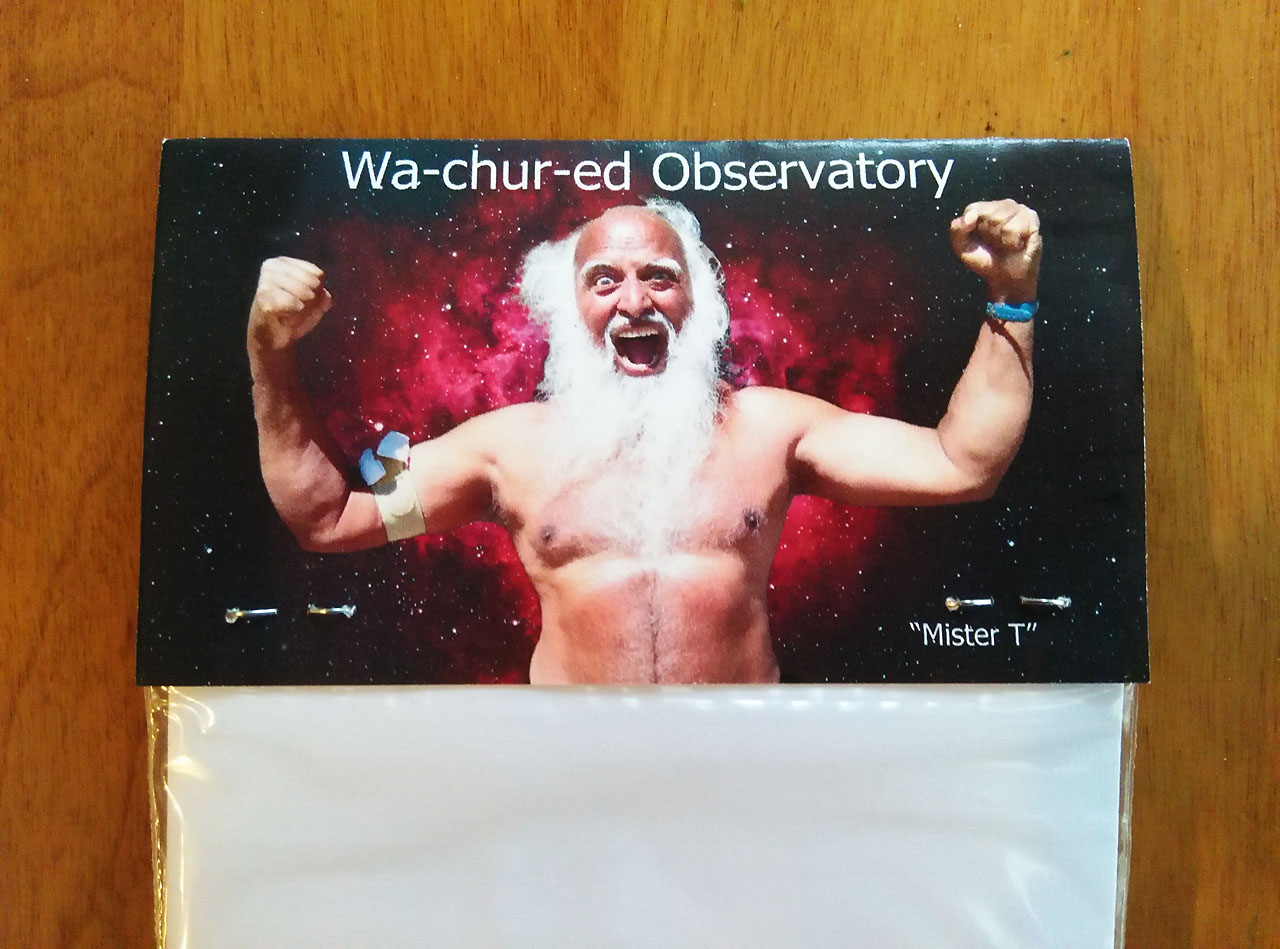“Mister T” is the simplest and most popular of my products. Most amateur astro-photography is done with DSLR cameras, and most of them are Canon EOS type (EF or EF-S mount). To attach such a camera to a telescope requires some kind of adapter and for that we turn to the old concept of the “T ring”. The T ring was developed long ago as a way for 3rd party lens manufacturers to produce lenses that could be used on many different kinds of cameras by standardizing on a simple threaded connection on the lens (“T threads”), and reducing the differences from one camera to another to a simple adapter, the T ring, that could be mass produced for each type of camera. Unfortunately, this neat solution was never intended to be used with telescopes and has some major weaknesses.
Most modern DSLRs use a “bayonet mount” in which the lens is inserted into the camera body in the appropriate orientation, then twisted until it snaps into place. What is happening when you do that is that the “bayonets” on the lens are forced under leaf springs in the camera, while another spring pushes a locking pin into a matching hole in the lens. So the lens is actually held in place by springs and cannot rotate because of the pin. But springs always have some “give” and the locking pin cannot perfectly match the hole due to manufacturing tolerances. The result is that the camera will tilt and turn slightly under the force of gravity. The amount of movement is often less than a human can detect, but more than enough to ruin an exposure.
Just a small tilt between camera and telescope will show up as distorted stars in the image – the center may be in focus, while the edges are out of focus in opposite directions. Worse yet, as a target is tracked across the night sky the effective direction of gravity changes, so the distortion “moves”, ultimately producing fuzzy stars everywhere.
Mister T (MRT) solves this problem by adding setscrews to the T ring adapter that can be tightened against the lens flange of the camera, fully compressing the springs, and locking it in place to prevent all tilting and rotation. The setscrews have nylon tips, so they won’t mar the finish of the lens flange on your camera. As an added bonus, MRT includes a small thumbscrew on the side that allows you to adjust the camera rotation to get the best orientation for your target, then lock it in place. Some telescopes (or other accessories) already provide this ability, but if yours doesn’t this feature alone is worth the price of MRT.
I always tell people “If you are using a Canon DSLR for astro-photography, you need MRT. You may not know it yet, but you do.”
So what about the “new face”? I used to package MRT in the same box that the original T ring came in, before my modifications. But this was never a very good package, and in the last batch of T rings I got there were no boxes at all! So I borrowed this packaging concept from my “Astro-Flash” product – a simple plastic bag with a printed label stapled over the end. But wait – there’s more! Recently, I found the perfect “spokesman” for MRT, someone just as tough and obsessed with integrity as MRT itself. So I’m proud to present (on the back side of the label, for now) the real Mister T:
This Mister T is a member of our local astronomy club and a practitioner/instructor of “Tiger Breathing”, which is what he was doing when this photo was taken.
To paraphrase the original Mister T, “I pity the fool who doesn’t use this adapter!”

